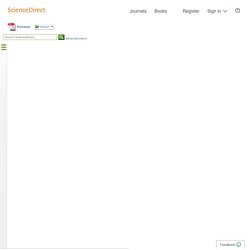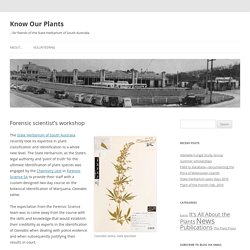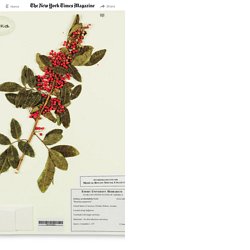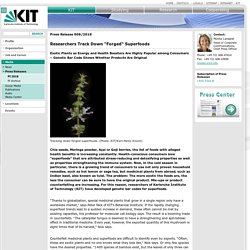

Medicinal plant uses and names from the herbarium of Francesc Bolòs (1773–1844) Ethnopharmacological relevance Ethnobotany takes into account past uses to be projected into the present and future.

Most current ethnobotanical research is focused, especially in industrialised countries, on obtaining information of plant uses from elderly people. Historical ethnobotany is less cultivated, although papers have demonstrated its interest. Particularly poor, but potentially very relevant, is the attention paid to historical herbaria as a source of data on useful plants. Aims of the study Bearing this in mind, we studied the herbarium of the Catalan pharmacist and naturalist Francesc Bolòs (1773–1844), which contains information on medicinal uses and folk names, with the aim of establishing a catalogue of plants and uses and tracing them through old and contemporary literature. Methodology The ca. 6,000 plant specimens of this herbarium were investigated to assess those including plant uses and names. Results Conclusions © 2017 Elsevier B.V. Forensic scientist’s workshop on Marihuana specimens.
Cannabis sativa, male specimen The State Herbarium of South Australia recently took its expertise in plant classification and identification to a whole new level.

The State Herbarium, as the State’s legal authority and ‘point of truth’ for the ultimate identification of plant species was engaged by the Chemistry Unit in Forensic Science SA to provide their staff with a custom-designed two-day course on the botanical identification of Marijuana, Cannabis sativa. The expectation from the Forensic Science team was to come away from the course with the skills and knowledge that would establish their credibility as experts in the identification of Cannabis when dealing with police evidence and when subsequently justifying their results in court.
Plant-based remedies: An invisible healthcare system - Latino USA - Latino USA. Doctor Ina Vandebroek is happy because she and her team just received a grant worth $100,000, for her work in the field of urban botany.

She catalogs the variety of names used by Latino and Caribbean communities to describe medicinal plants and pairs the colloquial names with their botanical identities (the Latin name used for taxonomy), so that their properties and components can be properly studied. In the New York Botanical Garden in the Bronx there is a plant the Dominican community that they call insulina, frequently used to treat diabetes.
Insulina belongs to the Genus costus, it comes from the Costaceae family. Dominicans also use the guanábana fruit (also known as soursop in English), classified scientifically as Annona muricata. The leaves are often prepared as a tea for respiratory tract problems, it is also used for trouble sleeping, nerves and hypertension, not to mention as a tasty ingredient in smoothies. Laura Calçada Laura arrived to New York City in September 2013. Kew’s Plant Names Services used by global health regulators.
The seeds of Abrus precatorius L., widely used for jewellery, contain a potent toxin.

MPNS has collated c 70 names of use within the pharmaceutical literature as well as 8 different scientific synonyms. (Photo: G.Lewis) Current confusion in herbal medicine Herbal medicine is big business. It is estimated that in 2013, €614 million worth of herbal products were imported into the EU alone. In addition to its culinary uses, star anise (Illicium verum Hook.f.) is widely confused, including in European legislation, with the poisonous Japanese plant Illicium anisatum L. Regulators are increasingly aware of these issues and some have taken considerable effort to improve the quality and consistency of the plant names they use. Can scientific names solve the problem? There are many different scientific names in use for medicinal plants. The new standard IDMP covers all medicinal products from aspirin to nasal sprays including products derived from plants. How Medicinal Plant Names Services got here.
Could Ancient Remedies Hold the Answer to the Looming Antibiotics Crisis? On a warm, clear evening in March, with the sun still hanging above the horizon, Cassandra Quave climbed aboard a jalapeño-green 4-by-4 and started to drive across her father’s ranch in Arcadia, Fla.

Surveying the landscape, most people would have seen a homogenous mat of pasture and weeds punctuated by the occasional tree. Quave saw something quite different: a vast botanical tapestry, rich as a Persian rug. Researchers Track Down “Forged“ Superfoods. Exotic Plants as Energy and Health Boosters Are Highly Popular among Consumers – Genetic Bar Code Shows Whether Products Are Original Tracking down forged superfoods.

(Photo: KIT/Karl-Heinz Knoch) Chia seeds, Moringa powder, Açai or Goji berries, the list of foods with alleged health benefits is increasing constantly. Health-conscious consumers love “superfoods” that are attributed stress-reducing and detoxifying properties as well as properties strengthening the immune system. Now, in the cold season in particular, there is a growing trend of consumers to use not only proven household remedies, such as hot lemon or sage tea, but medicinal plants from abroad, such as Indian basil, also known as tulsi.
“Thanks to globalization, special medicinal plants that grow in a single region only have a worldwide market,” says Peter Nick of KIT’s Botanical Institute. Counterfeit medicinal plants and superfoods are difficult to identify even by experts. Professor Peter Nick. Herbarium specimens in new National Library exhibition – Botanics Stories.